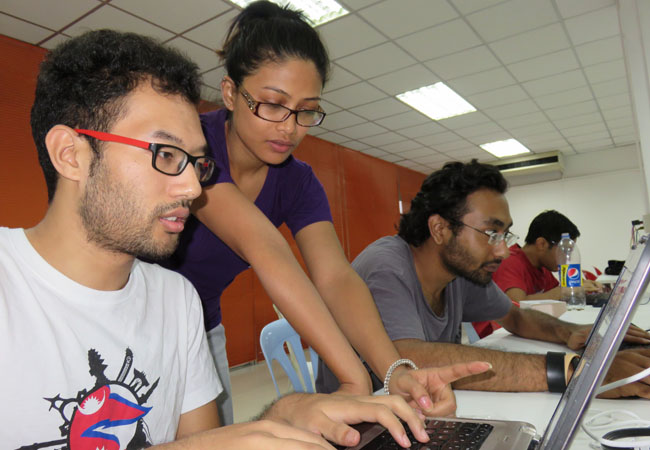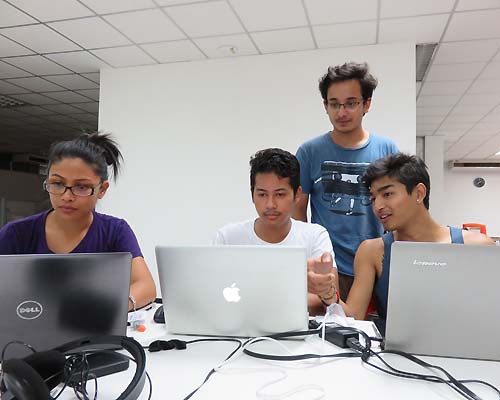So the students decided on April 27 to aid their
country with their minds, high-tech skills and available time at AIT to
prepare a portable system that will aid earthquake victims to gain
access to the internet. It will allow people in impacted areas to
communicate with the outside world.
Chirag Rajkarnikar, 22, (Computer Science-UG),
Yemini Bajracharya, 23, (Computer Science-UG), Dristideep Tuladhar, 21,
(Computer Science-UG), Suhas Shrestha, 21, (Computer Science-UG),
Manish Shakya, 24, (Computer Science-Master’s), Shirish Kayastha, 21,
(Information and Communications Technology-UG), and Sachham Man
Buddhacharya, 22, (Information and Communications Technology-UG) asked
permission to volunteer for the Digital Ubiquitous Mobile Broadband
OLSR (DUMBO) system, a technology operating under the direction on Vice
President for Research and AIT intERLab Director Prof. Kanchana
Kanchanasut.
Digital Ubiquitous Mobile Broadband OLSR (DUMBO) is
a project that deploys a mobile wireless network on an ad hoc basis for
emergency conditions, such as after a natural disaster when a fixed
network infrastructure is not available or has been destroyed.
DUMBO is expected to be sent to Nepal from AIT in
the very near future. The equipment has been donated by THNIC
Foundation.
Even with the intense pressures of final exams
looming, the students spend their days in a computer science lab
installing, configuring, and testing 40 small routers and 4 large
routers that will serve as a mesh network that can be deployed to make
WiFi internet connection a reality in disaster-hit areas. Working as a
fine-knit team, they work to download open source software, and
increase the memory to the mesh network’s routers.
Elementary schools have been destroyed, they
explain, so they also scour children's learning websites, researching
appropriate educational video content that is suitable for upload to
the system. Their goal is to find plenty of interesting content that
will keep primary school-aged children engaged, and their mind’s active
and learning via the Web – despite not having a physical school to go
to.


